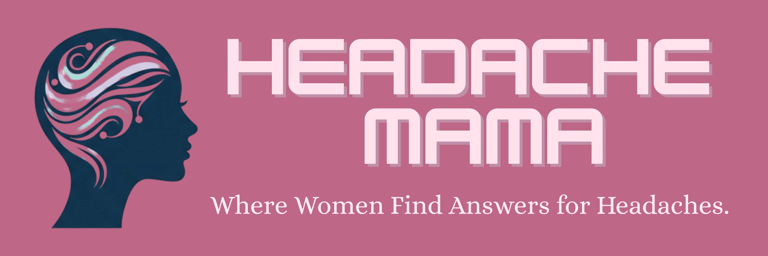Why the Monsoon Might Be Giving You a Headache
Discover the scientific reasons behind monsoon headaches and migraines. This evidence-based article explains how barometric pressure, humidity, and other weather factors during the Indian monsoon can trigger head pain. Learn about your triggers and get practical, expert-backed tips for management and relief.
6/9/20254 min read


For many of us, the beauty of the monsoon also brings along an unwelcome companion: headaches.
Why do headaches seem to strike more often when it rains? Is it just the change in weather, or is there something else going on? In this blog, we’ll dive into why rainy days can trigger headaches — and what you can do to stay comfortable and pain-free this monsoon season.
If you’ve ever wondered, "Am I just imagining this?" or been told, "It's just the weather," you're not alone. And more importantly, you're not wrong. There is real science behind why the rainy season can trigger headaches, especially for those prone to migraines. Let's unpack the science behind the "monsoon headache."
Why Rain Can Trigger Headaches
1️⃣ Barometric Pressure Swings
You can think of barometric pressure like the "weight" of the air around us. Even though we can’t see it, the air is always pressing down on our bodies.
When the weather is clear and sunny, the air is heavier → barometric pressure is high.
When a storm or rain is coming, the air becomes lighter → barometric pressure drops.
Now here’s the tricky part:
Our body—especially the sinuses in your head—gets used to a certain air pressure.
When the pressure suddenly changes (like just before a heavy rain), your body needs to adjust—and that can cause:
☁️ Sinus pressure → feels like a stuffy head or face
☁️ Migraine headaches → throbbing or pounding pain
In short: when barometric pressure drops before rains, many people—especially those prone to headaches or migraines—can feel it in their head. Think of it as your body’s “rain warning system” (though not a very fun one!).
2️⃣ High Humidity & Hydration
Monsoons bring humidity aplenty. It might feel cool, but if you're not sipping water often, you risk dehydration—a well-known headache trigger.
3️⃣ Allergens & Mold
Damp surroundings invite mold and dust mites. If you're sensitive, sinus pressure and headaches can follow.
4️⃣ Temperature & Routine Changes
Erratic weather and routine disruptions can unbalance sleep, stress, and digestion—common migraine triggers.
5️⃣ Lightning Strikes
This might sound like something out of a movie, but it's true! A fascinating study from the University of Cincinnati found that the risk of headache or migraine onset increased by 19% on days with lightning strikes within 40 kilometres of a person's home.
Researchers believe this could be due to the electromagnetic waves emitted by lightning or the release of airborne pollutants like ozone.
What Science Says
A 2023 big-data study of over 4,300 people found strong links between low barometric pressure, rainfall, high humidity, and increased headaches.
Around 37% of migraine sufferers in that study were women (average age ~34), making its findings especially relevant for many Indian women.
Clinics and hospitals worldwide, including Mayo Clinic, Cleveland Clinic, and the American Migraine Foundation, confirm that humidity and pressure changes are well-documented headache triggers.
Your Action Plan for a Headache-Free Monsoon
While you can't stop the rain, you can build a strong defense against the headaches it brings. Here are monsoon-specific strategies to help you feel your best:
Be Proactive, Not Reactive
The key is to act before the pain begins. Since pressure changes often happen 24-48 hours before the rain, being prepared is your biggest advantage.
Become a Weather Watcher: Use a reliable weather app on your phone. Pay attention to alerts about drops in barometric pressure. If you see a significant pressure drop forecasted, you know it's time to activate your prevention plan.
Time Your Medication (With Doctor's Advice): If you are a diagnosed migraine sufferer, talk to your doctor about a preventive strategy. They might advise you to take your prescribed pain-relief or anti-inflammatory medication before the headache is expected to start.
Control Your Indoor Climate
The monsoon traps moisture everywhere. Your home can become a breeding ground for headache triggers.
Ensure good ventilation. On dry days, open windows to air out your home.
Check damp-prone areas like closets, shoe racks, and under sinks for signs of mould growth and clean them immediately.
Use Your AC Wisely: Running an air conditioner for even a short while can make the air in your room much more comfortable. However, avoid setting the temperature too low, as sudden shifts from warm, humid outdoors to cold indoor air can be a trigger.
Mindful Hydration and Nutrition
Hydrate with Warm Fluids: You may not feel thirsty, but you're still losing fluids. Sip on warm water, clear soups, or herbal teas like ginger or tulsi tea throughout the day.
Watch the Salt: While the craving for fried, salty snacks (pakoras, samosas!) is real, be mindful. High-sodium foods can contribute to dehydration and fluid retention, worsening headaches.
Don't Skip Meals: Unstable blood sugar is a classic migraine trigger. Even if the monsoon mood tempts you to skip meals, try to eat regularly.
Embrace Soothing Home Remedies
Steam Inhalation: Best friend for sinus-related headaches. Inhale steam for 5-10 mins. Add eucalyptus oil or a pinch of ajwain (carom seeds).
Gentle Champi (Head Massage): A gentle massage with warm coconut or sesame oil on your scalp, neck, and shoulders can improve blood circulation and release tension.
Stay Active Indoors: Do simple neck and shoulder stretches, gentle yoga, or just walk around the house to avoid stiffness.
Conclusion
By integrating these monsoon-specific habits into your routine, you can significantly reduce the frequency and severity of your headaches—allowing you to truly savour the beauty and comfort of the rainy season.
References
Kim, J., et al. (2017). Association of headache with meteorological parameters and air pollutants. Scientific Reports, 7(1), 15822.
Martin, V. T., et al. (2013). Impact of lightning on headache. Cephalalgia, 33(8), 539–549.
National Headache Foundation. Dehydration.
Prince, P. B., et al. (2004). The effect of weather on headache. Neurology, 62(7), A224.
American Migraine Foundation. Weather and Migraine. https://americanmigrainefoundation.org/resource-library/weather-and-migraine/
American College of Allergy, Asthma & Immunology (ACAAI). Sinusitis. https://acaai.org/allergies/allergic-conditions/sinusitis/
Maghbooli, M., et al. (2014). Ginger vs. sumatriptan in migraine. Phytotherapy Research, 28(3), 412–415.
American Migraine Foundation. Migraine and Diet. https://americanmigrainefoundation.org/resource-library/migraine-and-diet/
Cleveland Clinic. Sinus Infection (Sinusitis). https://my.clevelandclinic.org/health/diseases/17701-sinusitis
John, P. J., et al. (2007). Yoga therapy in migraine. Headache, 47(5), 654–661.
Disclaimer
Content on HeadacheMama.com is for informational purposes only and is not a substitute for professional medical advice. Always consult your doctor.
contact@headachemama.com
© 2025. All rights reserved.
